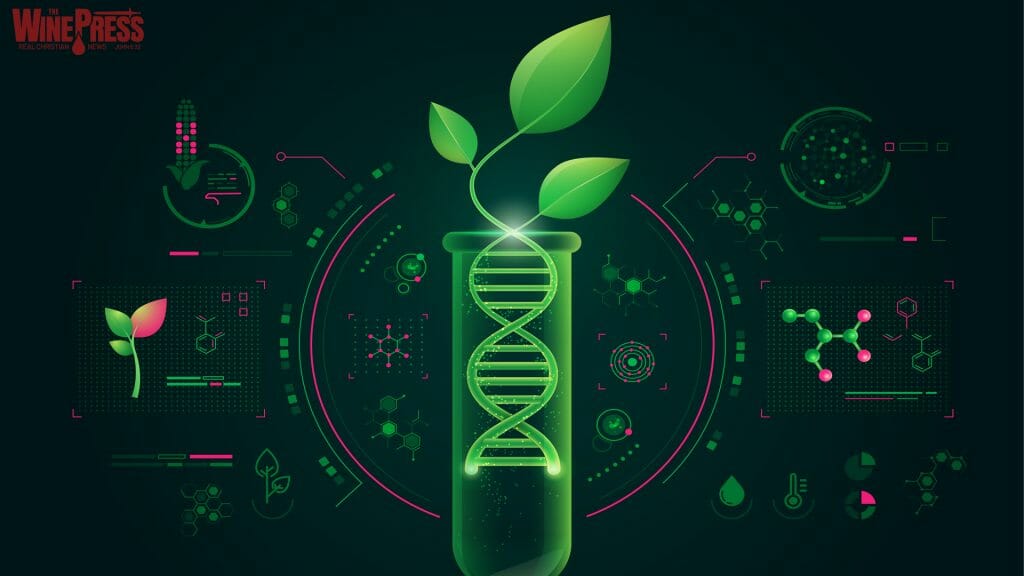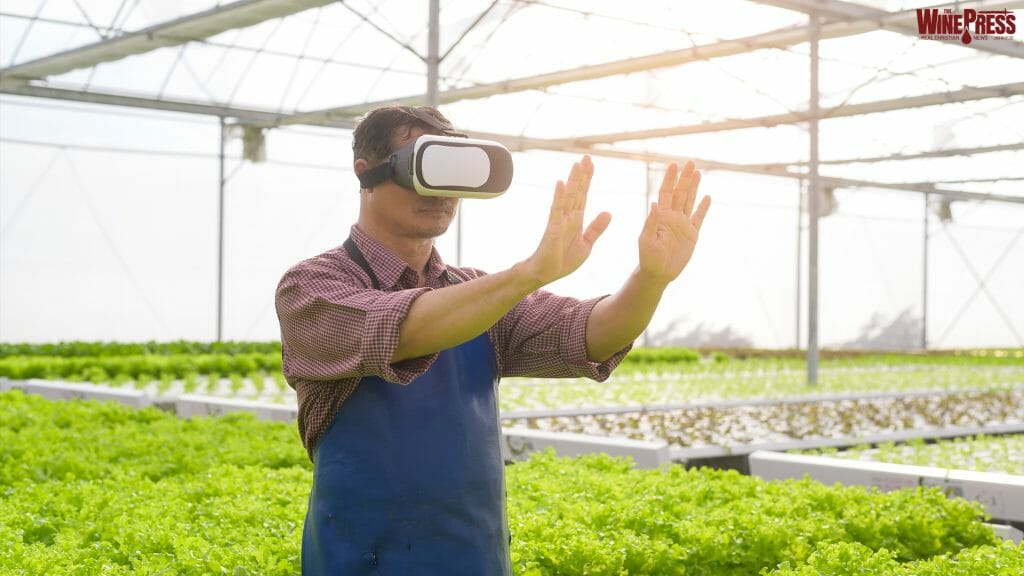The following report is by Richard Lawrence is head of gene editing, yield, disease, and quality research at Bayer, based in St Louis, US; per AgFunder News:
Picture in your mind a tall, sprawling field of corn. Now shrink it down while maintaining the yield.
This is just a glimpse of what the fields of the future – more resilient to climate change and extreme weather, and yet still able to provide the staple crops the world needs – could look like. Here’s why.
Protecting crops is most commonly associated with defending plants from the insects and diseases that can threaten the viability of a harvest.
However, in addition to the continuing pressures from these insects and diseases, protecting our crops today also increasingly means protecting them against the biggest and most dangerous threat of all: climate change.
The impact of climate change is real and pressing for farmers throughout the world. Insurance claims for crop losses connected to climate change in the US, for instance – through drought, flooding, and extreme winds and storms – cost some $27 billion between 1991 and 2017. In West Africa, the average production loss for sorghum and millet alone as a result of climate change stood at $6 billion per year between 2000 and 2009.
Plant science innovations continue to help farmers to be productive – not only now, but also into the future. And just as importantly, they also help to mitigate the impacts of climate change, while simultaneously building resilience against its worst effects.
The need to provide innovative technologies to farmers will only grow as we try to stay ahead of more frequent extreme weather events.
Crop scientists at Bayer and other companies are making use of RNAi (ribonucleic acid interference) – a natural process that is used to ‘turn down’ the expression of certain genes in organisms, including crops. This could be a vital technique for ensuring a climate-resilient future for farmers.
One innovative use of RNAi has been the development of ‘short stature corn.’ Here, RNAi is used to turn down a gene that plays a role in controlling height in the plant, resulting in a variant of corn that is shorter than traditional varieties.
Though counterintuitive for farmers used to associating taller crops with higher yields, shorter corn offers a range of promising benefits for farmers – and, indeed, the whole of the food system – as they face the generational challenge of climate change.
For one, reduced plant height gives shorter crops increased stability in strong winds. This can reduce the yield-robbing impacts of root lodging, where the roots of the plant are ripped from the ground; and green snap, where winds can break plants at the stalk. This short stature can make the corn less susceptible to extreme weather events like a ‘derecho,’ or extreme wind storms that can cause a lot of damage to fields that are close to harvesting.
A single 14-hour derecho event on August 10, 2020 that stretched across parts of the US corn belt caused $11 billion in total damages, proving to be the costliest thunderstorm in US history. And in China, storms are among the most significant disasters impacting agriculture, contributing to about $27 billion in losses each year.
Short stature corn is also being developed through precision breeding methods. This means the innovation can be brought as broadly as possible to farmers globally by tailoring the innovation to a grower’s region, helping them to become more resilient to the effects of climate change – protecting their productivity, crops, and livelihoods amidst rising global challenges.
Ultimately, innovations like short stature corn can transform farming for the better.
It is clear that the effects of climate change are intensifying, and this will likely mean more frequent extreme weather events, increasing risk for farmers and global food production whether through shifting temperatures, unpredictable rainfall and droughts, or other erratic climate shifts.
Agriculture needs to move, and move fast, from being viewed only as a contributor to climate change to being known a part of the solution; and innovations in crop resilience will play an important role in how we get there.
While the corn may be shorter, innovations like RNAi and precision breeding will help to ensure a longer, more resilient future for agriculture.
AUTHOR COMMENTARY
And the nations were angry, and thy wrath is come, and the time of the dead, that they should be judged, and that thou shouldest give reward unto thy servants the prophets, and to the saints, and them that fear thy name, small and great; and shouldest destroy them which destroy the earth.
Revelation 11:18
The money-making ploy and agenda for the future seems to demonstrate a shift away from traditional pharmaceuticals – hidden under a partial guise of new age and holistic practices that are run by controlled opposition – to now these immensely manipulated and malnourished foods; “foods” that will only cause the masses to get sicker and sicker. Though, the masses won’t realize it because their brains will be fried and lost in the metaverse and digital twins system.
This is all the more reason why you must grow organically and not rely on the grocery stores and conventional ways of shopping, because more and more junk will be coming down the pike.
Moreover, this same type of tech being employed, and the mRNA inserted in this report, can just easily be used on conventional feedlot livestock, and the fake plant-based “meats.”
Oil Giants Invest In AI Companies To Remove Carbon From The Air And Soil, Furthering Agenda 2030
Warning: Entire Swaths Of American Farmland Is Being Confiscated To Install New “Carbon Pipelines”
[7] Who goeth a warfare any time at his own charges? who planteth a vineyard, and eateth not of the fruit thereof? or who feedeth a flock, and eateth not of the milk of the flock? [8] Say I these things as a man? or saith not the law the same also? [9] For it is written in the law of Moses, Thou shalt not muzzle the mouth of the ox that treadeth out the corn. Doth God take care for oxen? [10] Or saith he it altogether for our sakes? For our sakes, no doubt, this is written: that he that ploweth should plow in hope; and that he that thresheth in hope should be partaker of his hope. (1 Corinthians 9:7-10).
The WinePress needs your support! If God has laid it on your heart to want to contribute, please prayerfully consider donating to this ministry. If you cannot gift a monetary donation, then please donate your fervent prayers to keep this ministry going! Thank you and may God bless you.










Gotta love how they call RNAi a “natural process”.
They did this with wheat already to battle “climate change” And now, because of hybridizing, the world has “celiac disease”. Something unheard of 40 years ago. This will probably be worse.
Agreed. They’ll just manufacture pestilence so they can keep the masses on this endless cycle of medical apartheid.
“It is clear that the effects of [***COUGH COUGH GEOENGINEERING***] climate change are intensifying, and this will likely mean more frequent extreme weather events, increasing risk for farmers and global food production whether through shifting temperatures, unpredictable rainfall and droughts, or other erratic climate shifts [that are of our machinations].”
“The Dimming” – referring to the sun and much, much more on climate engineering! A must see! Complete with patents and samples collected and analyzed from those supposed “contrails” that you see in the sky…
https://www.geoengineeringwatch.org/the-dimming-full-length-climate-engineering-documentary/
From the NIH’s PubChem website in regards to the compound Silver Iodide
“9Use and Manufacturing
9.1Uses
Photography; laboratory reagent; CLOUD SEEDING FOR ARTIFICIAL RAINMAKING”
https://pubchem.ncbi.nlm.nih.gov/compound/Silver-Iodide#section=Use-and-Manufacturing